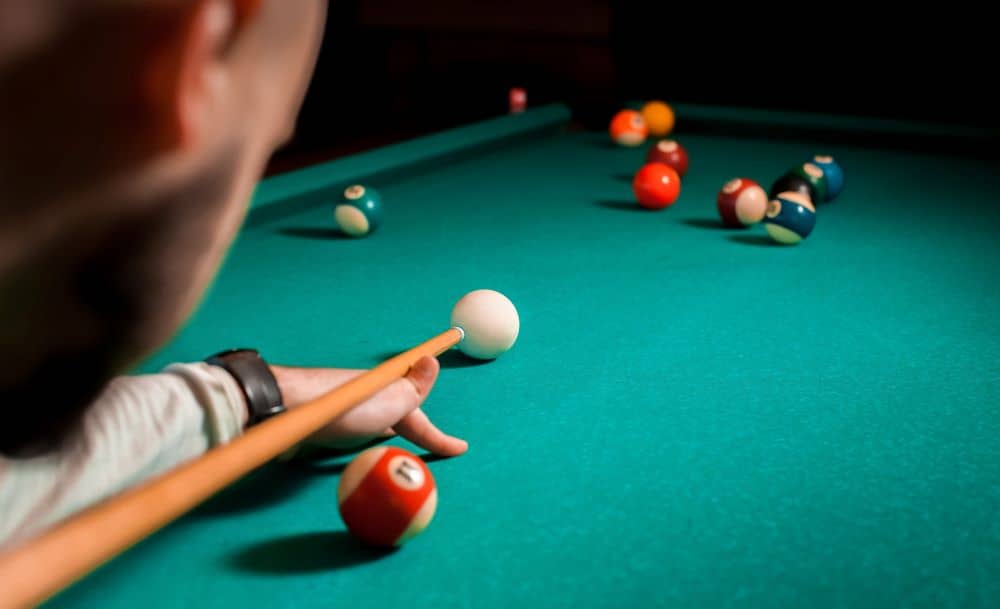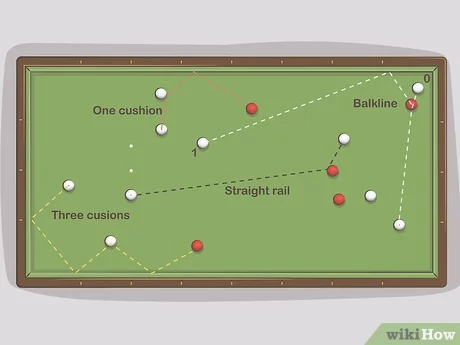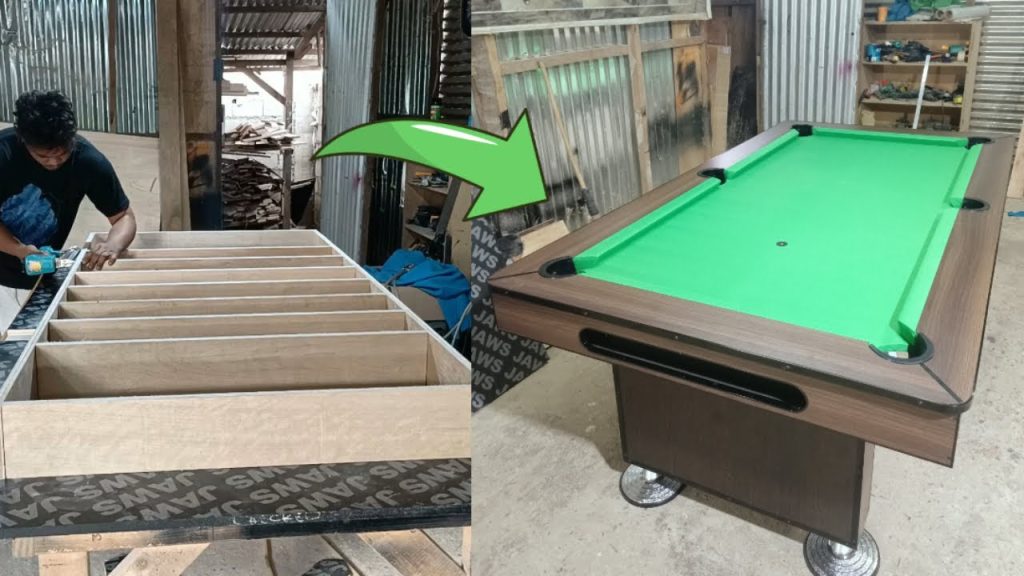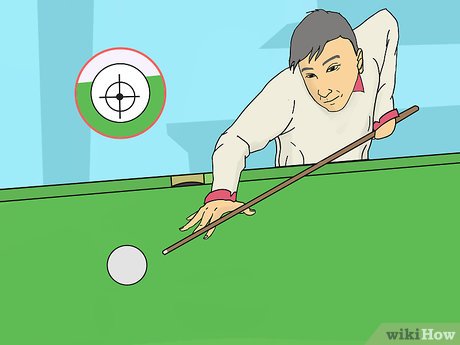Playing billiards is a fun and engaging pastime. It is also a great way to socialize.
Billiards may seem complex at first, but with some practice, anyone can learn. Do you want to learn how to play billiards? This classic game, enjoyed worldwide, combines skill and strategy. Whether you are a beginner or looking to refine your skills, understanding the basics is key.
Billiards is not just about hitting balls with a cue stick; it involves precision, patience, and practice. In this guide, we will explore the essential rules and techniques. You will gain insights into setting up the table, making the right shots, and playing like a pro. Let’s dive into the world of billiards and get you started on your journey to becoming a skilled player.
Introduction To Billiards
Billiards is a classic game enjoyed by many around the world. It requires skill, strategy, and a keen eye. This guide will introduce you to the basics of billiards, including its history and the different types of billiards games. Whether you are a beginner or looking to refine your skills, this introduction will set you on the right path.
History And Origin
Billiards has a rich history that dates back to the 15th century. It originated in Europe, where it was played as an outdoor lawn game. Over time, it moved indoors and evolved into the table game we know today. Kings, nobles, and commoners all enjoyed this game, making it popular across various social classes.
The word ‘billiards’ comes from the French word ‘billart,’ which means ‘stick.’ The game has evolved, but its essence remains the same. The objective is to use a cue stick to strike balls and pocket them in designated holes. This history adds a layer of depth to the game, connecting modern players with centuries of tradition.
Types Of Billiards Games
There are several types of billiards games, each with its own rules and objectives. The most common types are Pool, Snooker, and Carom. Pool, often played in bars, has various game modes like 8-ball and 9-ball. Players must pocket specific balls in a particular order.
Snooker, popular in the UK, is played on a larger table with smaller balls. It requires players to score points by pocketing balls in a specific sequence. Carom billiards, less known but equally challenging, involves hitting both object balls with the cue ball in a single shot. Each type offers a unique challenge and requires different skills.
Understanding these types helps you choose the game that best suits your interests and skill level.
Essential Equipment
To excel at billiards, you need the right equipment. The quality and condition of the gear can affect your game. Let’s look at the essential equipment you need to play billiards.
Billiard Table
The billiard table is the centerpiece. Standard tables are 8 or 9 feet long. The surface is covered with felt, which must be smooth and clean. The table has six pockets, one at each corner and one in the middle of each long side. A level table ensures fair play.
Cues And Balls
A cue stick is used to strike the balls. Cues vary in weight and length. Choose one that feels comfortable. The tip of the cue is crucial. It must be well-maintained for precise shots.
Billiard balls are made of resin. They are durable and designed to roll smoothly. The standard set includes 15 numbered balls and one cue ball. Each ball’s size and weight must be consistent for a fair game.
Basic Rules And Terminology
Billiards is a fascinating game that many enjoy. Learning the basic rules and terminology can make your experience better. This section will help you understand the main points of the game.
Objective Of The Game
The primary goal in billiards is to score points. Players do this by hitting balls into pockets or hitting specific targets. Each game variant has its own rules for scoring.
Common Terms
Understanding common terms is essential. Here are some key terms:
- Break: The first shot that starts the game.
- Cue Ball: The white ball that players hit with the cue stick.
- Object Balls: The balls that players aim to hit or pocket.
- Scratch: When the cue ball falls into a pocket. This usually results in a penalty.
- Bank Shot: A shot where the ball bounces off the side of the table before going into a pocket.
- Combination Shot: A shot where the cue ball hits one ball, which then hits another ball into a pocket.
These terms form the foundation of your billiards knowledge. Knowing them will help you communicate and understand the game better. Enjoy playing and improving your skills!
Stance And Grip
Playing billiards requires more than just striking the cue ball. To excel, you need a good stance and grip. These elements are crucial for accuracy and power. Let’s dive into the essential techniques to improve your game.
Proper Stance
Your stance is the foundation of your shot. A good stance ensures balance and stability. Here are the steps to achieve a proper stance:
- Feet Position: Place your feet shoulder-width apart.
- Dominant Foot: Position your dominant foot slightly forward.
- Knees: Keep your knees slightly bent.
- Body Alignment: Align your body with the cue and the target.
Remember, your stance should feel natural. Avoid being too rigid or too loose.
Effective Grip Techniques
Your grip on the cue stick affects control and precision. Follow these tips for an effective grip:
- Relaxed Grip: Hold the cue stick with a relaxed grip.
- Finger Placement: Use your thumb and index finger to form a V-shape.
- Hand Position: Place your hand about 6-8 inches from the end of the cue.
- Wrist Alignment: Keep your wrist straight to ensure smooth strokes.
A proper grip helps you execute shots with accuracy. Practice these techniques to improve your billiards skills.
Aiming And Shooting
Learning to aim and shoot correctly is crucial for any billiards player. It involves a combination of skill, focus, and practice. By mastering these techniques, you can improve your game significantly.
Aiming Techniques
Good aiming starts with proper alignment. Position your body so that your dominant eye is directly over the cue stick. This helps you see the shot line more clearly.
Use the ghost ball method. Imagine a second ball touching the object ball. This “ghost ball” shows where the cue ball needs to hit. Practice visualizing this ghost ball to improve your aim.
Another technique is the contact point method. Focus on the exact point where the cue ball will contact the object ball. This helps you align your shot more accurately.
Shot Execution
Once you’ve aimed, it’s time to shoot. Hold the cue stick with a firm yet relaxed grip. Ensure your hand is stable but not tense.
Before striking, take a few practice strokes. This helps you get a feel for the shot. Then, pull the cue stick back smoothly and strike the cue ball with a controlled motion. Follow through with your stroke to maintain accuracy.
Pay attention to your stance and body movement. Keep your body still to avoid disrupting the shot. Your stance should be balanced and comfortable.
| Technique | Description |
|---|---|
| Ghost Ball Method | Visualize a second ball touching the object ball. |
| Contact Point Method | Focus on the point where the cue ball hits the object ball. |
- Aim with your dominant eye over the cue stick.
- Practice strokes help you get a feel for the shot.
- Follow through with your stroke to maintain accuracy.
- Keep your stance balanced and comfortable.
Advanced Techniques
Billiards is a sophisticated game that demands skill and strategy. As you improve, you’ll want to learn advanced techniques. These techniques can elevate your game and impress your friends. Let’s dive into some of these advanced skills.
Spin And English
Adding spin to your shots can change the ball’s path. This technique, often called English, is crucial. By hitting the cue ball off-center, you can control its spin. A right-side hit gives right spin; a left-side hit gives left spin. Top spin pushes the ball forward faster. Bottom spin slows it down or makes it come back. Experiment with different spins to see their effects.
Bank Shots And Kicks
Bank shots involve hitting the ball off one or more rails. This technique is useful for tricky shots. Aim for a spot on the rail to direct the ball into the pocket. Precision is key. Practice makes perfect.
Kicks are similar but use multiple rails. These shots can save you in difficult situations. Visualize the ball’s path. Aim carefully. Repetition will improve your accuracy. Mastering bank shots and kicks can turn the tide in close games.
Strategy And Tactics
Mastering billiards involves more than just hitting balls into pockets. Understanding strategy and tactics can elevate your game significantly. Knowing when to play defensively and when to go on the offensive is crucial. Let’s dive into some key strategies and tactics that will help you excel in billiards.
Defensive Play
Defensive play is about limiting your opponent’s opportunities. One effective tactic is the safety shot. This involves positioning the cue ball in a way that makes it difficult for your opponent to make their shot. Consider these tips:
- Aim to leave the cue ball behind other balls.
- Place the cue ball near the rail.
- Ensure your opponent has no clear shots.
Another defensive strategy is to play a soft shot. By hitting the ball gently, you can control the speed and placement. This can disrupt your opponent’s rhythm.
Offensive Strategies
Offensive strategies focus on making successful shots and scoring points. One key tactic is position play. This involves planning your next shot while making your current shot. Here are some methods:
- Visualize the cue ball’s path after hitting the target ball.
- Use spin to control the cue ball’s direction.
- Set up your next shot by leaving the cue ball in a favorable position.
Another offensive tactic is the combination shot. This involves hitting one ball to strike another into the pocket. Combination shots can be complex but highly rewarding.
Both defensive and offensive strategies require practice and patience. Focus on honing these tactics to improve your overall game. Remember, billiards is not just about skill but also about smart play.

Credit: www.wikihow.com
Practice Drills
Practicing drills is key to improving your billiards game. Consistent practice builds muscle memory and sharpens your skills. Below are some effective practice drills you can do alone or with a partner.
Solo Drills
Practicing alone helps you focus on your technique. Here are some solo drills to try:
- Straight Shots: Line up the cue ball and an object ball. Practice hitting the object ball into different pockets. This helps with aim and control.
- Bank Shots: Place the cue ball at different spots on the table. Aim to bank the ball off the cushion into a pocket. This drill improves your understanding of angles.
- Speed Control: Practice hitting the cue ball with different levels of force. Try to stop the cue ball at specific spots. This helps you control the speed of your shots.
Partner Drills
Practicing with a partner adds a level of competition. It also helps you adapt to different playing styles. Here are some partner drills:
- Alternate Shots: Take turns with your partner to make shots. This drill simulates a real game and helps you stay focused.
- Safety Play: Practice leaving the cue ball in difficult positions for your partner. This helps you develop defensive strategies.
- Challenge Matches: Play short games to a set number of points. These matches add pressure and help you learn to perform under stress.
Common Mistakes
Playing billiards is fun, but many beginners often make common mistakes. These errors can affect your performance and enjoyment. By understanding and correcting these mistakes, you can improve your game significantly.
Avoiding Fouls
Avoiding fouls is crucial in billiards. Fouls can lead to losing turns and giving your opponent an advantage. Here are some common fouls to avoid:
- Not hitting the correct ball first. Make sure you hit your designated ball.
- Scratching (pocketing the cue ball). This gives the opponent a ball in hand.
- Double hitting the cue ball. Strike the ball cleanly to avoid double hits.
- Jumping the cue ball off the table. Keep control of your shots to avoid this.
By being aware of these fouls, you can play more strategically and avoid giving your opponent free shots.
Improving Consistency
Consistency is key to becoming a better billiards player. Many players struggle with maintaining consistent shots. Here are some tips to improve your consistency:
- Practice your stance. A stable stance helps in delivering consistent shots.
- Focus on your grip. Hold the cue stick with a relaxed but firm grip.
- Work on your aim. Aim for the center of the cue ball for straight shots.
- Develop a pre-shot routine. This helps in maintaining focus and consistency.
By following these tips, you can ensure that your shots are consistent and accurate. This will greatly improve your overall performance in the game.
| Common Mistake | Correction |
|---|---|
| Not hitting the correct ball | Identify and target your designated ball |
| Scratching | Avoid pocketing the cue ball |
| Double hitting | Strike the ball cleanly |
| Jumping the cue ball | Maintain control of your shots |
| Inconsistent shots | Practice stance, grip, aim, and pre-shot routine |

Credit: quedos.com.au

Credit: www.billiards.com
Frequently Asked Questions
What Are The Basic Rules Of Billiards?
Billiards involves hitting balls with a cue stick into pockets. The primary objective is to score points by sinking balls in a specific order. Each variant of billiards, such as pool or snooker, has its own set of rules.
How Do You Hold A Billiard Cue?
Hold the cue stick with your dominant hand, around 6-8 inches from the end. Your non-dominant hand should form a bridge on the table to stabilize the cue.
What Is The Purpose Of Chalk In Billiards?
Chalk helps maintain friction between the cue tip and the cue ball. This ensures accurate shots and prevents the cue from slipping off the ball.
How Do You Aim In Billiards?
To aim, align your cue with the intended path of the cue ball. Visualize the contact point on the object ball. Keep your eyes on the target and follow through smoothly.
Conclusion
Playing billiards can be fun and rewarding. Practice regularly to improve. Focus on accuracy and control. Understand the rules and strategies. Enjoy the challenge and thrill. Share the game with friends and family. Billiards offers great social interaction. Stay patient and persistent.
Every game is a learning experience. Enjoy the journey of becoming better. Happy playing!



